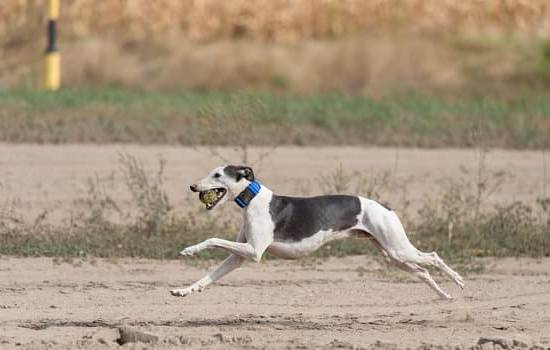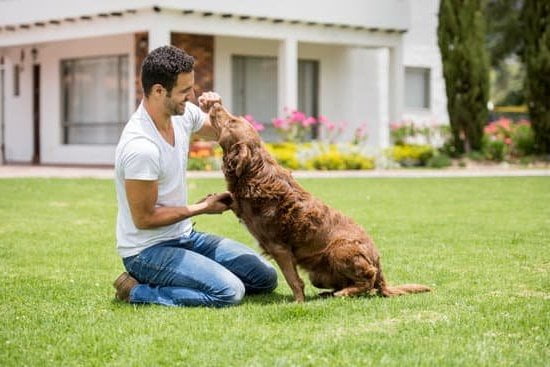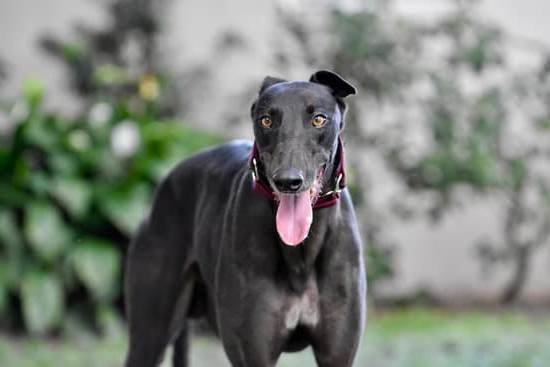Training your dog to sit without treats is a valuable skill that can strengthen the bond between you and your furry companion. While treats can be effective in the training process, it’s important to explore other methods that can encourage obedience and good behavior. In this article, we will delve into the significance of training your dog without treats and provide you with insightful tips on how to achieve this.
Positive reinforcement training is a fundamental aspect of teaching your dog to sit without relying on treats. By understanding the basics of positive reinforcement, you can effectively motivate your dog to respond to commands and cues without the need for constant rewards. This form of training not only fosters obedience but also promotes a healthy and respectful relationship between you and your pet.
Furthermore, building a strong bond with your dog through training is essential. Training sessions present an opportunity to communicate with your dog, establish trust, and strengthen your connection. By incorporating verbal praise, physical affection, and interactive play into the training process, you can create a positive environment that encourages good behavior even in the absence of treats.
Understanding the Basics of Positive Reinforcement Training
Positive reinforcement training is a highly effective method for teaching your dog to sit without the use of treats. This training approach focuses on rewarding good behavior with praise, affection, and other forms of positive reinforcement. By understanding the basics of positive reinforcement training, you can effectively communicate with your dog and encourage the desired behavior.
Timing and Consistency
One of the key principles of positive reinforcement training is timing. It’s crucial to reward your dog immediately after they perform the desired behavior. This helps them make the connection between their actions and the positive outcome. Consistency is also important; every time your dog sits when you give the command, they should receive praise or a reward to reinforce the behavior.
Use of Clickers or Markers
Clicker training can be a helpful tool in positive reinforcement training. A clicker or marker signal can be used to clearly indicate when your dog has done something right, followed by a reward. The sound of the clicker serves as a bridge between the action and the reward, making it easier for your dog to understand what they are being rewarded for.
Avoid Punishment
It’s important to avoid any form of punishment in positive reinforcement training. Instead, focus on redirecting unwanted behaviors and reinforcing good ones. Punishment can create fear and anxiety in dogs, leading to negative associations with training. By using positive reinforcement techniques, you can build trust and a strong bond with your dog while teaching them to sit without treats.
Building a Strong Bond With Your Dog Through Training
Training your dog without relying on treats is not only about teaching them commands, but it’s also an opportunity to strengthen the bond between you and your furry companion. Here are some tips on how to build a strong bond with your dog through training:
- Spend quality time together: Training sessions provide an excellent opportunity for you to spend time with your dog and focus on each other. Set aside dedicated time each day for training, and make sure it’s a positive experience for both of you.
- Use positive reinforcement: While treats can be effective in training, using praise, affection, and even play as rewards can help deepen the bond between you and your dog. When they respond to a command or exhibit good behavior, shower them with love and attention to reinforce the positive behavior.
- Pay attention to body language: Dogs are highly attuned to body language and non-verbal cues. During training, be mindful of your own body language and pay attention to your dog’s signals as well. This will help foster better communication and understanding between you both.
By focusing on building a strong bond through training, you’ll not only have a well-behaved dog, but also a deeper connection with your canine companion. Remember that patience, consistency, and positive reinforcement are key in creating a lasting and meaningful relationship with your dog.
Utilizing Verbal and Physical Cues for Training
When it comes to training your dog to sit without treats, utilizing verbal and physical cues is essential. While treats can be effective in the initial stages of training, transitioning to verbal and physical cues is important for long-term success. Here are some strategies for incorporating these cues into your training sessions:
- Verbal Cues: Using consistent verbal commands such as “sit” or “down” is crucial for teaching your dog to respond to your voice. It’s important to use clear and concise commands, and to always follow through with the corresponding physical cue.
- Physical Cues: Pairing your verbal commands with specific physical cues, such as hand signals or body language, can help reinforce the desired behavior. For example, you can use a hand signal to guide your dog into a sitting position and then reward them with praise or play.
In addition to verbal and physical cues, it’s important to emphasize positive reinforcement during training sessions. This means rewarding good behavior with praise, petting, or playtime instead of relying on food treats. By consistently using verbal and physical cues in combination with positive reinforcement, you can effectively train your dog to sit without the need for treats.
It’s also important to remember that every dog is unique, so it may take time for them to fully understand and respond to verbal and physical cues. Implementing consistency and patience in your training approach will be key in helping your dog master the command to sit without the use of treats.
Incorporating Toys and Play Into Training Sessions
When it comes to training your dog to sit without treats, incorporating toys and play into your training sessions can be highly effective. Dogs are naturally playful creatures, so utilizing their love for toys and playtime can make the training process enjoyable for both you and your furry friend.
Choosing the Right Toys
Selecting the right toys for training is essential. Look for toys that are interactive and engaging for your dog. Toys that can be used in a game of tug-of-war or fetch are excellent choices, as they allow you to incorporate commands such as “sit” within the context of play.
Using Play as a Reward
Instead of relying on treats, use play as a reward for your dog’s good behavior. After your dog successfully sits on command, engage in a fun game with their favorite toy as a way of reinforcing the desired behavior. This not only strengthens their understanding of the “sit” command but also enhances their bond with you through shared playtime.
Keeping Training Sessions Fun
Make sure to keep training sessions lighthearted and enjoyable for your dog. Incorporating play into the training process helps maintain their interest and motivation while learning new commands. By making training feel like an exciting game, you’ll encourage your dog to actively participate and respond positively to your cues.
By incorporating toys and play into your training sessions, you can effectively teach your dog to sit without relying on treats. Through engaging playtime as a reward, you not only reinforce good behavior but also create a positive and enjoyable training experience for both you and your canine companion.
Implementing Consistency and Patience in Training
Consistency and patience are key elements in training your dog to sit without the use of treats. Dogs thrive on routines, so it is important to be consistent with your commands, expectations, and rewards. Use the same verbal cues and hand signals each time you ask your dog to sit.
This will help your dog understand what is expected of them and reinforce the behavior you want to see. Additionally, being patient during the training process is crucial. Every dog learns at their own pace, so it’s important not to get frustrated if progress is slow.
When implementing consistency in training, it’s also important to set clear boundaries and remain firm in your commands. Avoid sending mixed messages by only rewarding the behavior you want to encourage. Inconsistent responses from the trainer can confuse a dog and hinder their progress.
Patience is equally important during training sessions as dogs may struggle to grasp certain commands or behaviors initially. It’s essential not to lose patience or resort to punishment if your dog doesn’t sit immediately. By providing clear and consistent guidance, along with positive reinforcement when they do sit, your dog will gradually learn what is expected of them.
Training without treats requires persistence in maintaining a regular training schedule while being patient enough to allow the learning process its due course. Implementing these two components effectively will help ensure that your dog learns how to sit without relying on treats for incentives.
| Element | Description |
|---|---|
| Consistency | Using the same cues and rewards consistently helps reinforce desired behavior. |
| Patience | Remaining patient while teaching a new behavior is crucial for successful training. |
| Persistence | Maintaining regular training sessions allows for steady progress in learning new behaviors. |
Troubleshooting Common Challenges in Training Without Treats
Training a dog to sit without the use of treats can present its own set of challenges. One common challenge is the lack of motivation for the dog to follow commands without the promise of a food reward.
In such cases, it’s important to reevaluate the methods being used and find other forms of positive reinforcement that resonate with your dog. This could involve finding alternative rewards or identifying activities that your dog naturally enjoys, such as playing with a favorite toy or receiving affectionate praise.
Another challenge when training without treats is dealing with distractions in the environment. Dogs can easily be swayed by interesting sights, sounds, or smells, making it difficult for them to focus on training. To address this issue, it’s beneficial to gradually introduce distractions during training sessions and reinforce the sitting command in various environments. This helps build your dog’s ability to remain focused and responsive despite external stimuli.
Additionally, some dogs may exhibit stubborn behavior during training sessions, refusing to respond to commands without the presence of treats. In these instances, it’s important for pet owners to exhibit patience and consistency in their approach. Avoid becoming frustrated or resorting to punishment, as this can create negative associations with training. Instead, maintain a calm and assertive demeanor while providing clear instructions and rewarding any signs of progress.
| Common Training Challenges | Possible Solutions |
|---|---|
| Lack of motivation without treats | Finding alternative rewards; identifying enjoyable activities; revisiting positive reinforcement techniques. |
| Dealing with distractions | Gradually introducing distractions; reinforcing commands in different environments. |
| Responding to stubborn behavior | Maintaining patience and consistency; avoiding punishment; providing clear instructions. |
Celebrating Success
Once your dog has successfully learned to sit without the use of treats, it’s important to reinforce and celebrate their good behavior. One way to do this is through verbal praise and affection. When your dog follows the command to sit, be sure to use a cheerful and enthusiastic tone to let them know that they have done well. You can also show physical affection by petting or giving them a belly rub as a reward for their obedience.
Another way to celebrate success in training without treats is by incorporating playtime with your dog. After they have successfully followed the sit command, engage in a fun game or go for a walk together. This positive interaction will reinforce the idea that good behavior leads to enjoyable activities and quality time with you, their owner.
It’s also important to remember that consistency is key in reinforcing good behavior without treats. Every time your dog follows the sit command, be sure to consistently offer verbal praise and affection. This will help solidify their understanding of what is expected of them and encourage continued obedience in the future. By celebrating success through positive reinforcement techniques, you can create a well-behaved and responsive dog without relying on treats for training.
Conclusion
In conclusion, training your dog to sit without treats is not only possible but can also strengthen the bond between you and your furry friend. By understanding the basics of positive reinforcement training and building a strong bond with your dog through consistent training, you can effectively teach them obedience without relying on treats as a reward.
Utilizing verbal and physical cues, as well as incorporating toys and play into training sessions, can make the learning process enjoyable for both you and your dog.
Consistency and patience are key when it comes to training without treats. It is important to remain firm and clear in your expectations while also being patient and understanding with your dog as they learn. By implementing these qualities into your training sessions, you can effectively troubleshoot common challenges that may arise without becoming frustrated or resorting to using treats as a crutch.
Overall, celebrating the successes of your dog’s good behavior without treats is crucial in reinforcing their obedience. Whether it’s through verbal praise, a pat on the head, or an extra play session, acknowledging and rewarding their efforts will further reinforce their responsive behavior. With dedication and commitment to positive reinforcement training methods, you can create a well-behaved and responsive dog without relying on treats as the primary motivator.
Frequently Asked Questions
How Do I Get My Dog to Sit Without a Treat?
One effective way to get your dog to sit without a treat is to use positive reinforcement through praise and physical affection. When your dog sits on command, immediately give them verbal praise and petting to reinforce the behavior. Consistency is key, so be sure to always provide positive reinforcement whenever your dog sits as requested.
What Are 3 Effective Ways to Train a Dog to Sit?
Three effective ways to train a dog to sit are using the lure-reward method, capturing the behavior, and using hand signals or body language cues. In the lure-reward method, you use a treat to guide your dog into the sitting position and then reward them with the treat once they achieve it.
Capturing the behavior involves observing your dog naturally sitting and then immediately rewarding them for doing so. Using hand signals or body language cues can also help communicate the command more effectively.
How Do I Get My Dog to Do Trick Without Treats?
To get your dog to do tricks without treats, you can start by gradually reducing their dependence on treats during training sessions. Once your dog has learned a trick using treats as rewards, begin replacing treats with praise, playtime, or other rewards that they enjoy.
It’s important to continue providing positive reinforcement for performing tricks even without treats in order to maintain their motivation and obedience.

Welcome to the blog! I am a professional dog trainer and have been working with dogs for many years. In this blog, I will be discussing various topics related to dog training, including tips, tricks, and advice. I hope you find this information helpful and informative. Thanks for reading!





